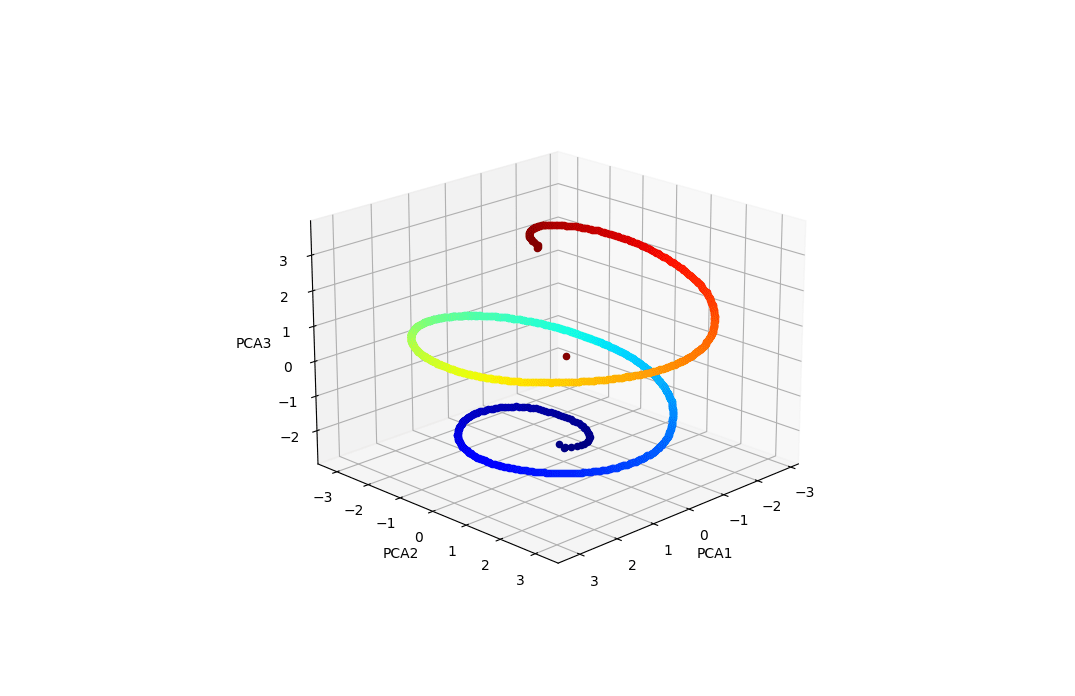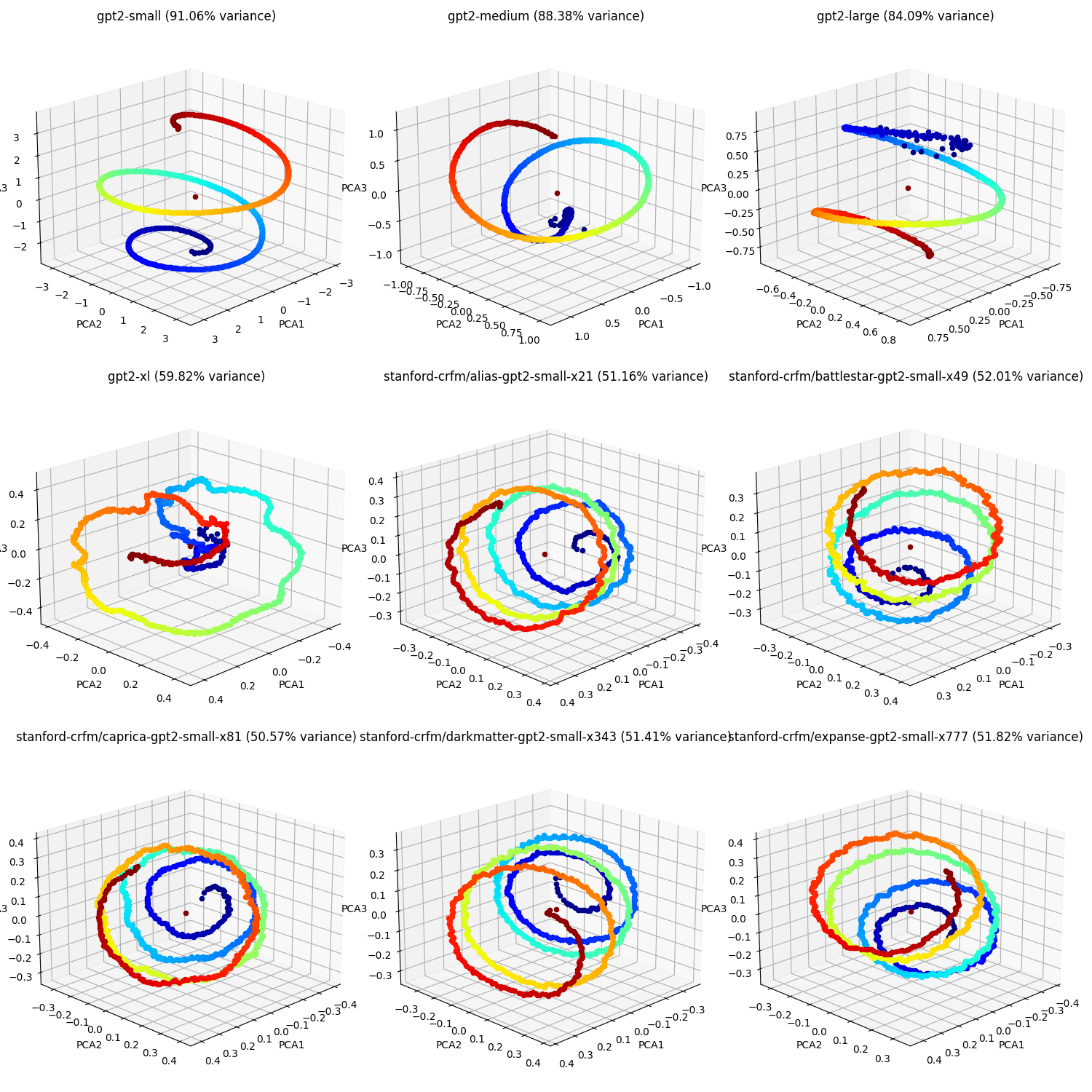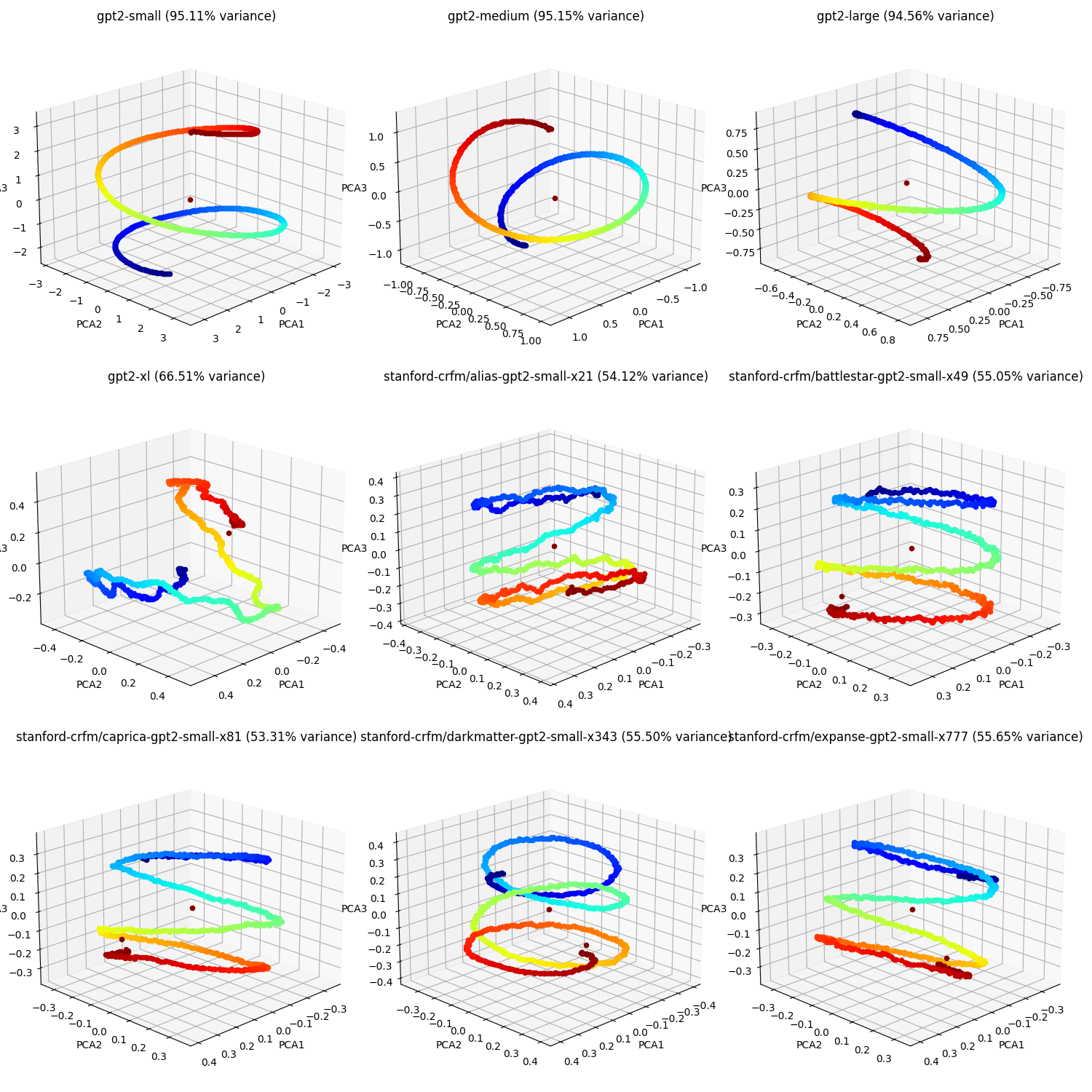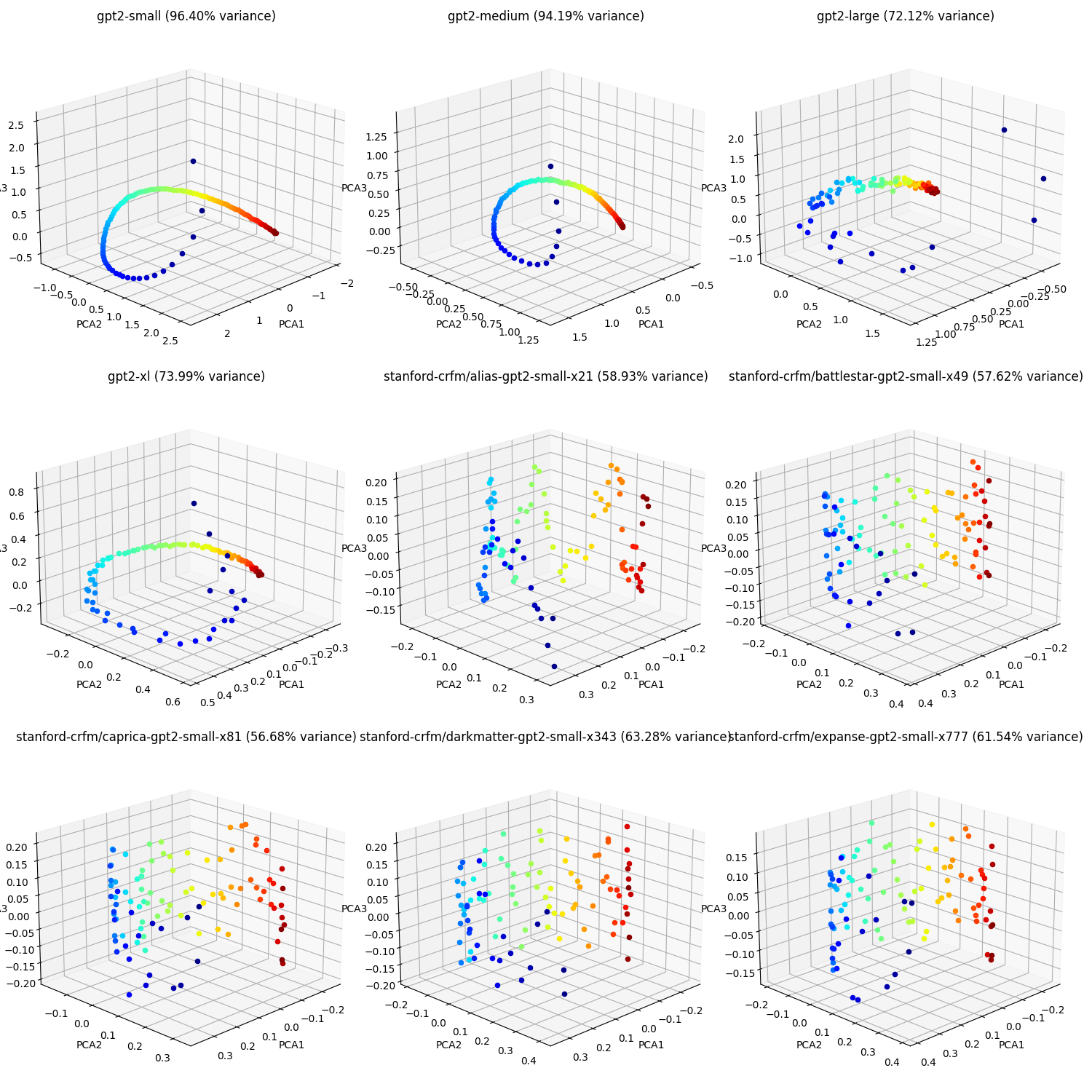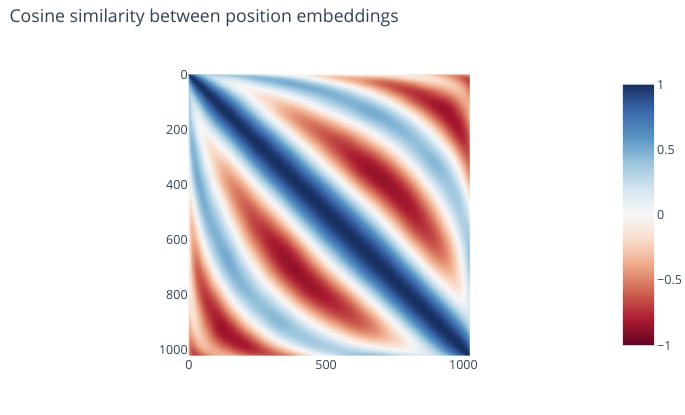GPT-2's positional embedding matrix is a helix
6cfoster0
3AdamYedidia
3JBlack
3cfoster0
1RM
1David Joshua Sartor
5Dentin
4Nathaniel Monson
3AdamYedidia
3AdamYedidia
0AdamYedidia
1asher
4Arthur Conmy
1asher
1jacopo
1MiguelDev
2AdamYedidia
1MiguelDev
1MiguelDev
2AdamYedidia
1MiguelDev
New Comment
Very cool! I believe this structure allows expressing the "look back N tokens" operation (perhaps even for different Ns across different heads) via a position-independent rotation (and translation?) of the positional subspace of query/key vectors. This sort of operation is useful if many patterns in the dataset depend on the relative arrangement of tokens (for ex. common n-grams) rather than their absolute positions. Since all these models use absolute positional embeddings, the positional embeddings have to contort themselves to make this happen.
Oh, interesting! Can you explain why the "look back N tokens" operation would have been less easily expressible if all the points had been on a single line? I'm not sure I understand yet the advantage of a helix over a straight line.
Is there any sort of regularization in the training process, favouring parameters that aren't particularly large in magnitude? I suspect that even a very shallow gradient toward parameters with smaller absolute magnitude would favour more compact representations that retain symmetries.
Good question. I don't have a tight first-principles answer. The helix puts a bit of positional information in the variable magnitude (otherwise it'd be an ellipse, which would alias different positions) and a bit in the variable rotation, whereas the straight line is the far extreme of putting all of it in the magnitude. My intuition is that (in a transformer, at least) encoding information through the norm of vectors + acting on it through translations is "harder" than encoding information through (almost-) orthogonal subspaces + acting on it through rotations.
Relevant comment from Neel Nanda: https://twitter.com/NeelNanda5/status/1671094151633305602
The helix is already pretty long, so maybe layernorm is responsible?
E.g. to do position-independent look-back we want the geometry of the embedding to be invariant to some euclidean embedding of the 1D translation group. If you have enough space handy it makes sense for this to be a line. But if you only have a bounded region to work with, and you want to keep the individual position embeddings a certain distance apart, you are forced to "curl" the line up into a more complex representation (screw transformations) because you need the position-embedding curve to simultaneously have high length while staying close to the origin.
Actually, layernorms may directly ruin the linear case by projecting it away, so you actually want an approximate group-symmetry that lives on the sphere. In this picture the natural shape for shorter lengths is a circle, and for longer lengths we are forced to stretch it into a separate dimension if we aren't willing to make the circle arbitrarily dense.
A line is just a helix that doesn't curve. It works the same for any helix; it would be a great coincidence, to get a line.
Complete newbie question: is it possible to construct a version of these models that uses a 3 dimensional vector, instead of the 768 dimensional vector?
From the sound of it, the 768 dimensional vector is basically a constant linear transform of the three PCA components. Can we just declare the linear transform to be a constant array, and only train up the three components that appear to be the most needed? Eg generate the 768 from the PCA?
I think you probably could do that, but you'd be restricting yourself to something that might work marginally worse than whatever would otherwise be found by gradient descent. Also, the more important part of the 768 dimensional vector which actually gets processed is the token embeddings.
If you believe that neural nets store things as directions, one way to think of this is as the neural net reserving 3 dimensions for positional information, and 765 for the semantic content of the tokens. If the actual meaning of the words you read is roughly 250 times as important to your interpretation of a sentence as where they come in a sentence, then this should make sense?
This is kinda a silly way of looking at it--we don't have any reason (that I'm aware of) to think of these as separable, the interactions probably matter a lot--but might be not-totally-worthless as intuition.
@AdamYedidia This is super cool stuff! Is the magnitude of the token embeddings at all concentrated in or out of the 3 PCA dimensions for the positional embeddings? If its concentrated away from that, we are practically using the addition as a direct sum, which is nifty.
It is in fact concentrated away from that, as you predicted! Here's a cool scatter plot:
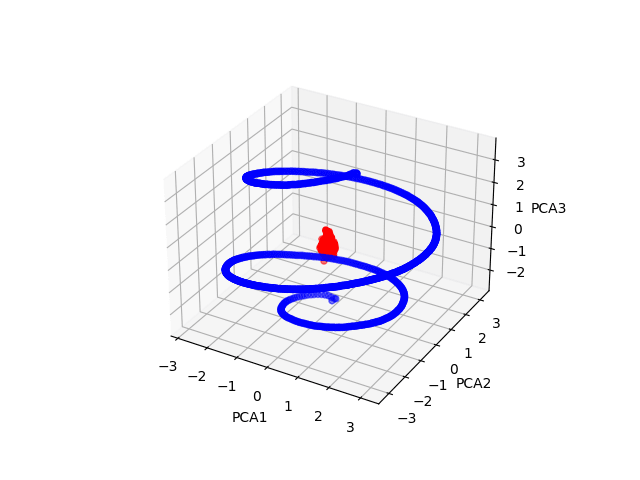
The blue points are the positional embeddings for gpt2-small, whereas the red points are the token embeddings.
If you want to play around with it yourself, you can find it in the experiments/ directory in the following github: https://github.com/adamyedidia/resid_viewer.
You can skip most of the setup in the README if you just want to reproduce the experiment (there's a lot of other stuff going on the repository, but you'll still need to install TransformerLens, sklearn, numpy, etc.
I think you could, but you'd be missing out on the 9% (for gpt2-small) of the variance that isn't in one of those three dimensions, so you might degrade your performance.
I'm pretty confused; this doesn't seem to happen for any other models, and I can't think of a great explanation.
Has anyone investigated this further?
Here are graphs I made for GPT2, Mistral 7B, and Pythia 14M.
3 dimensions indeed explain almost all of the information in GPT's positional embeddings, whereas Mistral 7B and Pythia 14M both seem to make use of all the dimensions.
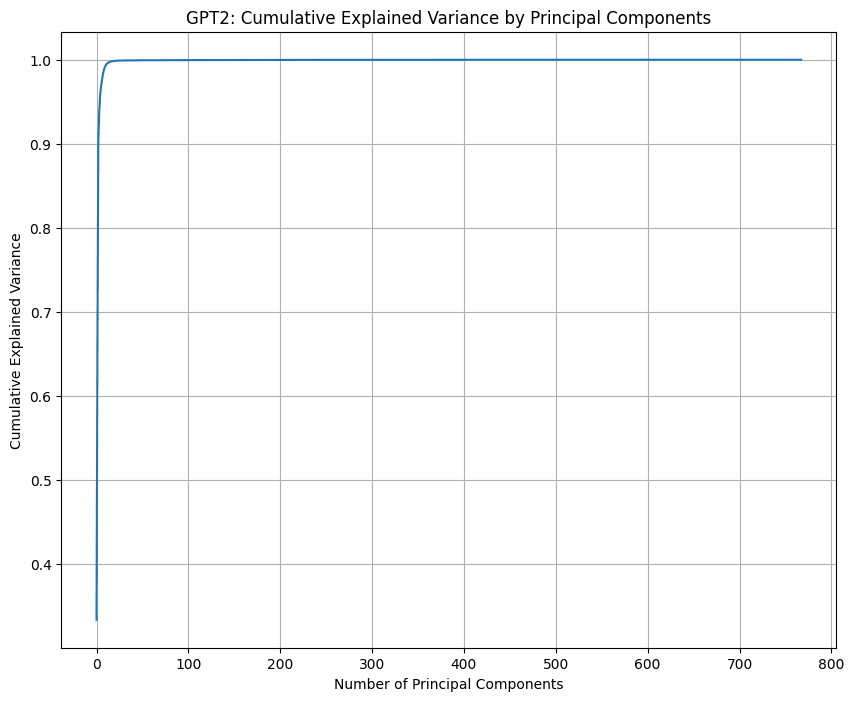
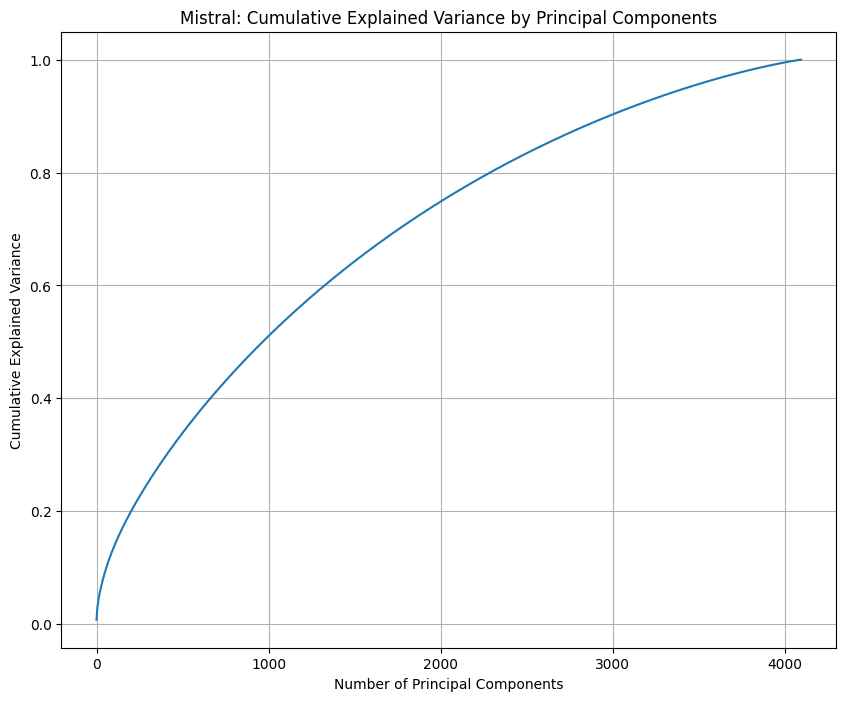
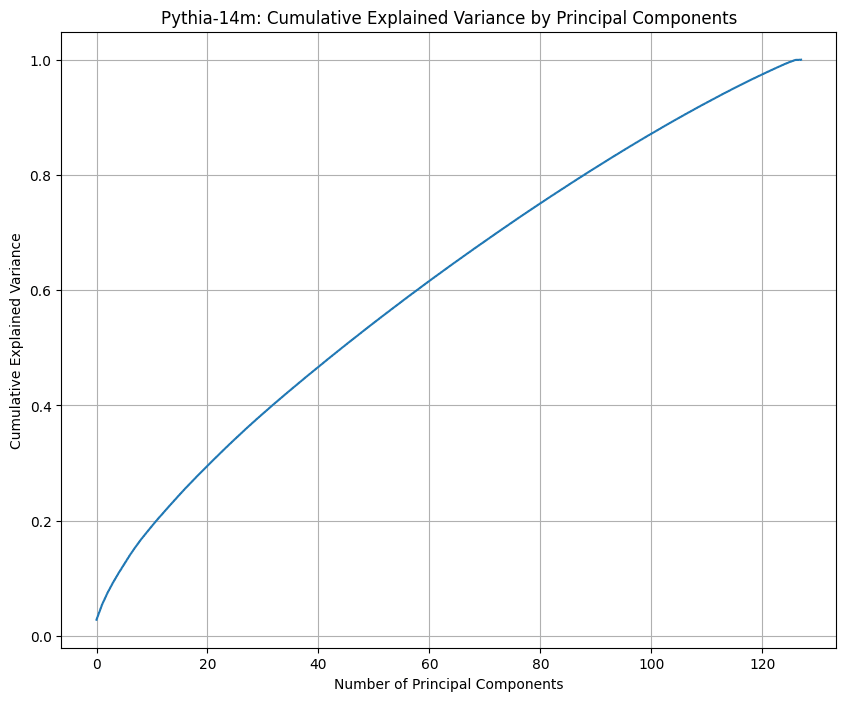
[This comment is no longer endorsed by its author]
Is there something that would regularise the vectors towards constant norm? An helix would make a lot of sense in this case. Especially one with varying radius, like in some (not all) the images
It remains unexplained why this helical structure is the most natural way for GPT-2 to express position.
Just an intuition but GPT2 uses GELU function which is normalized by pi.
Btw, what visualization softwared did you use here again?
Also, what vectors are you using? is this the final output layer?
I suggest trying the vectors in the encoder layers 0-48 in GPT2-xl. I am getting the impression that the visualization of those layers are more of a submerged iceberg rather than a helix...
Curated and popular this week
